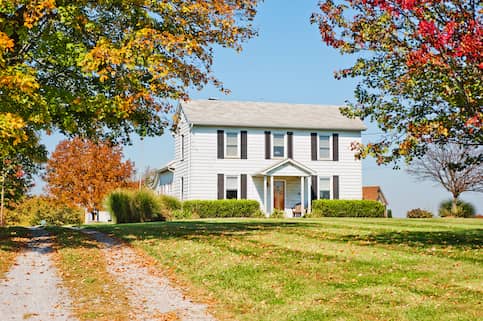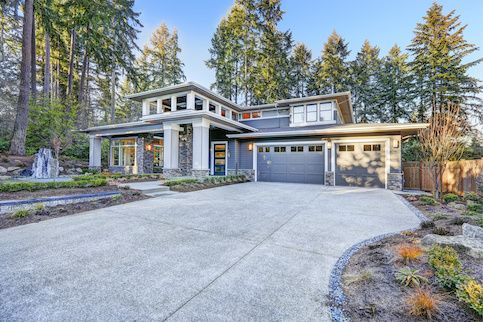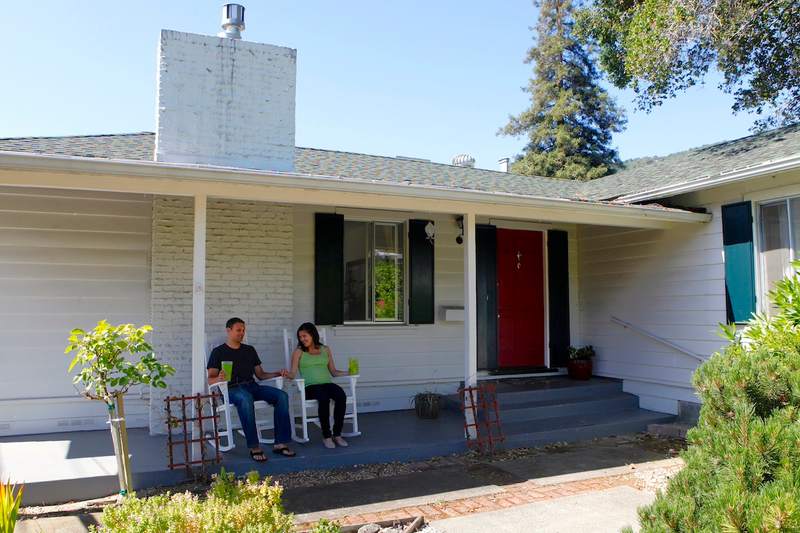What does a retired couple with 6 years left on their mortgage have in common with a young homeowner planning on changing jobs soon? Both might benefit from a 7/6 adjustable-rate mortgage (ARM) for their home.
A 7/6 ARM offers flexibility and a low interest rate for 7 years, which borrowers can take advantage of by saving money on interest and paying off their mortgage before the rates change.
Here are the details regarding the 7/6 ARM and how it works.
7/6 ARM Meaning
An adjustable-rate mortgage (ARM) is a home loan with an interest rate that is fixed for several years and then varies according to market indices. You can use an adjustable-rate mortgage to finance the purchase of a home or refinance your current home.
Borrowers have access to a range of ARMs designated by the number of years the fixed rate lasts and how often the rate changes later. For example, a 7/6 ARM offers a fixed interest rate for the initial 7 years of the loan. When 7 years expire, the interest rate adjusts every 6 months for the 23 years left on the loan.
The 7/6 ARM operates differently than the popular 5/1 ARM, which provides 5 years of fixed interest and then changes once a year for 25 years.
Because ARMs offer a lower rate at the beginning of the loan, they are ideal for homeowners who intend to pay off the remainder of their mortgage, refinance or move within the fixed rate period. As a result, borrowers can save money through the beneficial interest rate and pay off the loan before the rate changes.
Considerations For A 7/6 ARM
Although a 7/6 ARM offers interest rate advantages, it’s a good idea to evaluate your circumstances to see if this loan is right for you. For example, borrowers must have a minimum credit score of 620 to qualify for the loan. Additionally, your debt-to-income ratio (DTI) can be no higher than 50%, and your maximum loan-to-value ratio (LTV) can be 95%. Therefore, borrowers with challenging credit histories, high debt or little down payment may not find the 7/6 ARM an ideal choice.
Borrowers who don’t see their income increasing once the adjustable rate kicks in might struggle to afford the larger mortgage payments. Furthermore, homeowners who want to put down roots or start a family may benefit more from a fixed rate since a steady mortgage payment provides more stability.
See What You Qualify For
Buy A Home
Discover mortgage options that fit your unique financial needs.

Refinance
Refinance your mortgage to have more money for what matters.
Tap Into Equity
Use your home’s equity and unlock cash to achieve your goals.
How Does A 7/6 Adjustable-Rate Mortgage Work?
Not every adjustable-rate mortgage works the same way. However, the following are basic components of most 7/6 ARMs that borrowers should understand when considering how to finance their home.
Interest Rates
Every ARM has a specific interest rate setup. For example, with a 7/6 ARM, the lending industry identifies the interest rate as a 2/2/5 cap and floor structure, with each number referring to a different facet of the loan. 2/2/5 means that once the fixed rate period is over, the interest rate can increase up to 2 percentage points from the starting rate.
Every 6 months, the rate can adjust up to 2 more percentage points, represented by the second number 2. Finally, the interest rate can never rise above 5 percentage points throughout the entire loan. As such, the 2/2/5 cap provides a structure for the loan that limits how much the borrower’s monthly payment will be when the adjusted rate kicks in.
Adjustment Interval
After the first 7 years of the loan, the interest rate of a 7/6 ARM changes every 6 months. Therefore, the loan has an adjustment interval of 6 months. Whether the adjustment increases or decreases the interest rate depends largely on market conditions.
Index And Margin
Usually, lenders calculate the interest rate based on a market index, such as the secured overnight financing rate, constant maturity rate or the 11th District Cost of Funds Index. Each index correlates with lending trends and costs in the broader economy and influences mortgage rate dynamics.
Lenders also add margin to the interest rate, which they calculate by an internally set percentage or based on the borrower’s credit score. Consequently, a better credit score typically will lower your interest rate for a 7/6 ARM. Since your interest rate cannot go below the margin, securing a low marginal rate with an excellent credit score is crucial to obtaining a cost-effective 7/6 ARM.
Interest Rate Caps And Floors
As the name implies, interest rate caps and floors constrain how much a 7/6 ARM’s interest rate can rise or fall. Caps and floors benefit the lender and borrower because the boundaries keep the interest rate from dipping or increasing beyond specified limits.
For example, a 7/6 ARM with a 3/2/5 caps and floors structure would operate the following way:
- The borrower receives a fixed rate for 7 years.
- The interest rate will change no more than 3 points from the initial rate on the first adjustment.
- Every 6 months, the interest rate will shift, but it won’t go beyond 2 points from the first adjustment.
- Over the entirety of the loan, the caps and floors structure limits the interest rate from increasing or decreasing more than 5 percent. This figure is the lifetime limit, and the law requires lenders to provide it.
Pros And Cons Of 7/6 ARM Mortgage
Though 7/6 ARMs can save borrowers money, they aren’t for everyone. The following pros and cons will help you understand if a 7/6 ARM will benefit you or if a different loan might be more suitable.
7/6 ARM Pros
The main attraction of a 7/6 ARM is the low interest rate locked in for 7 years, along with these specific benefits:
- Borrowers can get a better rate than a fixed-rate mortgage and pay off their loan before the interest rate starts adjusting, saving them thousands through a reduced interest rate on their monthly payments.
- Suppose you foresee particular changes in your life, such as a raise in pay, relocation for a new job or the complete payoff of your mortgage. In that case, a 7/6 ARM offers the flexibility necessary to save money while your circumstances shift.
- Interest rate caps keep your interest rate within known limits. As a result, you don’t have to worry about your monthly payment spiraling out of control if you know you can afford the monthly payment based on the maximum interest rate cap.
- Your interest rate might decrease over time, giving you more savings without the hassle and cost of refinancing your mortgage.
- If interest rates are high, you can take out an ARM at a lower rate, then refinance down the line when interest rates drop.
7/6 ARM Cons
As with most loans and financial tools, certain drawbacks accompany 7/6 ARMs. The following may cause you to seek a different route for financing your home:
- Many 7/6 ARMs include payment penalties, which charge the borrower additional fees if they pay off the mortgage too soon. Therefore, borrowers should check if their lender charges payment penalties and plan to pay the mortgage off once enough time has passed.
- 7/6 ARMs have complex stipulations and payment structures. It’s recommended that you understand the loan terms before taking on a 7/6 ARM. Otherwise, you may end up with a mortgage that does more harm than good to your bank account.
- 7/6 ARMs offer a shorter fixed-rate mortgage period than other ARMs, namely the 10-year ARMs. If you plan to take on a 7/6 ARM, paying off the loan within 7 years could present an unmanageable time crunch.
- The interest rate floor keeps your interest rate from dipping beyond a certain point, which limits your savings on interest payments. Conversely, a wide range of caps and floors could give the interest rate too much room to grow, leaving you with an unaffordable mortgage payment if the rate increases by multiple percentage points.
- The adjusting interest rate is unpredictable, meaning your mortgage payment could rise significantly twice a year. As a result, a 7/6 ARM could wreak havoc on your budget or cause financial strain if the interest rate swings upward for consecutive adjustment periods.
- Even if you plan to refinance to a fixed-rate down the line, you’ll need to pay closing costs to refi. It’s smart to factor in closing costs if you plan to refinance an ARM.
The Bottom Line
A 7/6 ARM offers borrowers 7 years of a low, fixed rate before adjustments to the interest rate begin. To qualify, borrowers need a credit score of at least 620, while a better credit score will secure borrowers an even lower interest rate and maximize savings. Additionally, borrowers must have a debt-to-income ratio of 50% or lower and borrow no more than 95% of their home’s value.
While a 7/6 ARM provides borrowers an affordable initial interest rate, the loan can present financial difficulties if the interest rate adjusts too highly or if the borrower triggers a payment penalty fee. Borrowers interested in a 7/6 ARM should check with their mortgage lender to see if it’s the best option for them and their financial situation.
Find out if an ARM is right for you.
See rates, requirements and beneifts.

Ashley Kilroy
Ashley Kilroy is an experienced financial writer who writes for solo entrepreneurs as well as for Fortune 500 companies. She is a finance graduate of the University of Cincinnati. When Ashley isn’t helping people understand their finances, you may find her cage-diving with great whites or on safari in South Africa.












